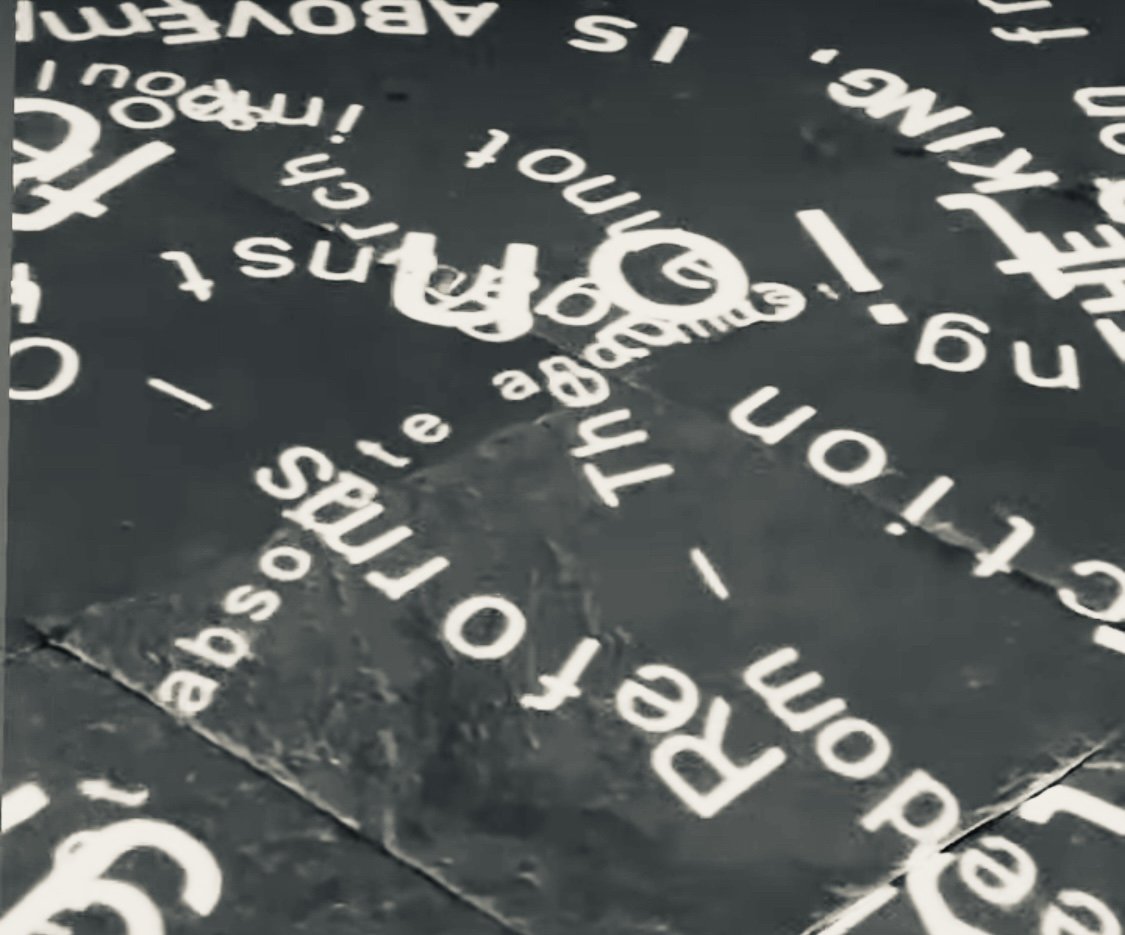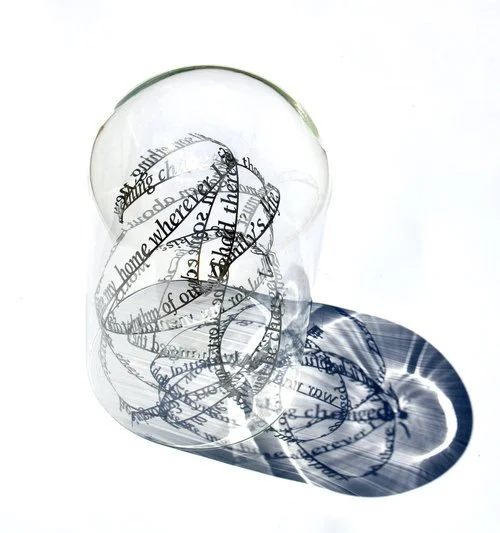Synaesthesia, Sculpture & Ernesto Neto
I was invited to write a piece for the Fabelist Art Journal about an artist who inspires me. I decided to tie it into the artwork I am currently making about the senses and synaesthesia. Original article published Dec 2012, (c) Nicola Anthony.
I have always been fascinated with the idea of the haptic – of understanding the world through touch, and of touching it not just through the skin, but also through other senses – touching with your gaze, your sense of smell, and as sculptor Ernesto Neto puts it “touching with your mind”. Early this year, I was invited to a talk by Neto which opened up a whole area of thought for me – of what sort of structures, concepts and artworks we can dream up when we start thinking about the world and our experiences of it through the language and lexicon of space – of knotting, folding and unfolding, of the addition of space, the flux of time? I had the peculiar pleasure of witnessing this renowned Brazilian artist dancing at the Tate Modern during his speech, and caressing the podium in an expression of passion for the ‘nature’ of objects. He is a quirky and charismatic individual who has fascinated me with his tactile, porous artworks for years.
Ernesto Neto, installation view, clove scented interiors at MoMa
“Sprawling, monstrous, playful sculptures”
Recognized as the most influential contemporary Brazilian artist, Neto lives and works in Rio de Janeiro. Influenced by Brazilian neo-concretism, his practice explores membranes, organic structures and sensory interaction between viewer and artwork. His most iconic installations are sprawling, monstrous, playful sculptures that use pendulous forms of translucent membrane, filled with tactile and sensuous materials such as polished ball bearings, spices and washing powder. Neto’s abstract, architectural pieces filled the Hayward Gallery in 2010. If you visited the space, perhaps like me, you experienced the artwork taking you physically away from the everyday, gradually becoming more aware of your surroundings and your connections with the space, the membranes, the art, the other people in the gallery. Neto’s pungent materials become a further layer of the sculpture, invisibly snaking around the gallery: A scent sculpture, being displaced, conveyed, shaped and eroded by passing viewers. Such experiential artworks mix up our senses. Scent becomes space and movement; sight becomes tactile; minuscule textures become vast visual landscapes and voyages; shapes and forms become palpable pressures, tensions and forces; whilst sounds become punctuations of time. My favourite ‘states of matter’ quote from Ernesto is – “What is silence, is it more solid than a stone?”
Ernesto Neto, Credit- Librado Romero, The New York Times
Image courtesy of Max Hetzler gallery
His talk addressed the question “Culture separates, bodies unify. How can we on a fragmented cultural planet, topolo-build a level of conviviality and habitability, beyond institutional skins, under a gravitational field?” This question is what Neto attempts to address through his artwork. Using his bodily sculpture he cuts through any barriers of culture. The spectator is invited to enter the spaces, tunnels, and crevices of his art. His porous forms represent an ‘internal landscape’. With an organicism that plays with scale, tension and connections, he sets about changing the spaces in which we engage with art, seeking to impress “the idea of getting inside a body, not the actual representation of being inside an organ… The white cube is no longer a white cube”. He references specific works such as the Nave series – an object inside of an object inside of a gallery.
Anthropodino, photo – Jean Vong Photography, Inc.
So what is topology?
As mathematical theory of space, topology is primarily concerned with stretching and transforming space. It gets exciting when we apply the theory and lexicon of topology outside of the field of mathematics, say, to a sculpture: Space becomes understood not as a static container, but a series of connections, a multiplicity, and a progression of movements. The rhythm and energy of Neto’s articulations were punctuated with his thoughts on the expression of time (and how much time he had left to talk to us). His speech itself seemed organic and autonomous, taking him off on a tangent when the stimulus or the situation lent itself.
“We can never really touch the present because as soon as it is here, it is gone”
His animated, seemingly-haphazard explanation for his passion with the world drew me into the mind and the experience of this remarkable artist, and his whimsical tangents always somehow came back to make a number of profound or fascinating points. His impromptu dancing and rhythm-singing subsequently illustrated his relationship between the body and the world: The way, he explained, that we can never really touch the present because as soon as it is here, it is gone. Neto described how touch is so important, leading to his experiential sculptures that are ‘now’. Through them, he attempts to bring us as intimately as he can into contact with the present moment. He spontaneously demonstrated the difference between European dancing (which according to Ernesto uses the top of the body due to it’s traditionally treble-focus, and Brazilian dancing using the lower part of the body due to it’s base-focus), noting how our different sensory ways of experiencing the world have made these differences in our cultures. Our cultural “difference in meta-physics” has altered the way in which we physically encounter the world.
Ernesto Neto installation, Image courtesy of Hayward Gallery
His thoughts were about no small matter – the planet: “Who wants to carry this stone… I like to carry stones, I am a sculptor… we want to find out what’s inside of the stone, what’s outside of the stone.” This inside-outside relationship is key to the artists work, which explores the idea of the membrane, what stays on one side and what escapes through; the tension between the inner and the outer.
“What are the representations or signatures of the organic?”
After this fascinating conversation which playfully and thoughtfully considered all manner of abstract and lofty concepts, as well as Neto’s time learning to crochet with his Gran, a question from Margaret Wertheim seems to tie things up nicely: “What are the representations or signatures of the organic?” Neto observes that for him, the organic is present in ourselves as opposed to inherent to the object, and relies upon our recognition of something as ‘organic’. It also has a lot to do with forces he says – such as the pendulous lobes, contortions and bulges in his installations, which “show the energy upon them”. He confesses that before the tension of weights and gravity is applied, his sculptures are often simply squares containing holes.
Centre Pompidou installation view, image courtesy of Kaysgeog photos
For me the most amazing thing about what we explored, is that whilst his work has a visual rhythm and simplicity to it, it also poetically and sensuously explores concepts from space and time, to material and matter, to physics and cosmology. Ultimately, Neto talks of our relationship to the planet through our own bodies & personal experiences, and then pushes even further to evoke our pasts through his redolent aromas, and awaken our ‘now’ with his absorbing, tactile creations.
“sweet, gentle, tender connections”
By the end of the talk, we seemed to have oscillated between microscopic space and vast constellations. Ernesto’s sculptures and way of experiencing the world had become embedded in my mind, and I found myself floating out of the Tate and along the Southbank, noticing the intersections, barriers, and tensions between the people, the Thames, and the walkways – the folds and touch points which could ambiguously be both barriers, and as Neto put it, “sweet, gentle, tender connections”.
Ernesto Neto, The Island Bird, 2012, polypropylene and polyester rope, plastic balls. Photo- Nicci Yin. Courtesy Tanya Bonakdar Gallery
Ernesto Neto, Image courtesy of CSW Art Conference Torun
Centre Pompidou, image courtesy of Kaysgeog photos









